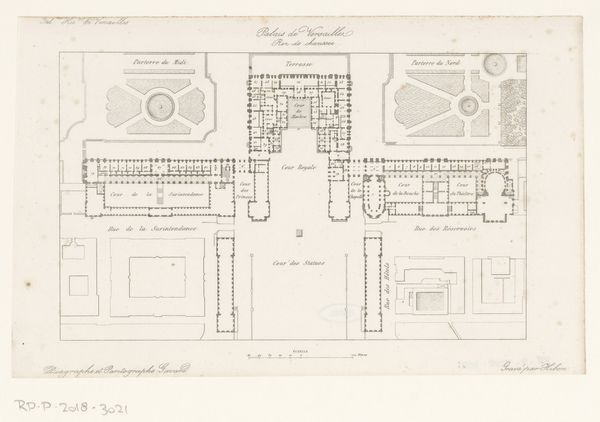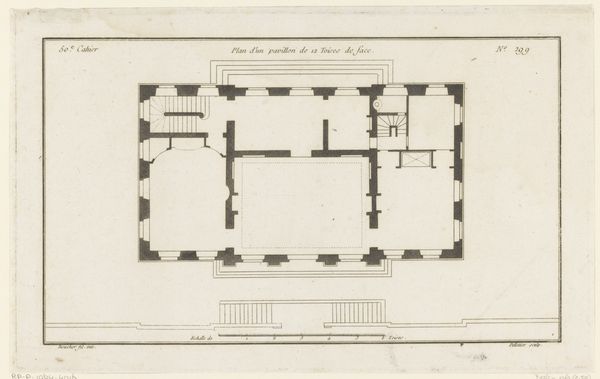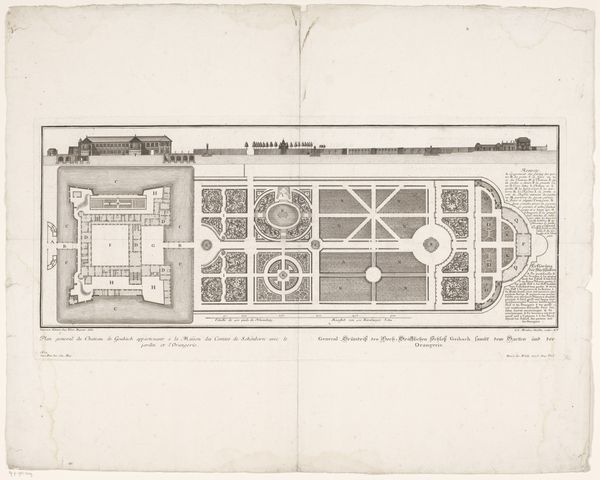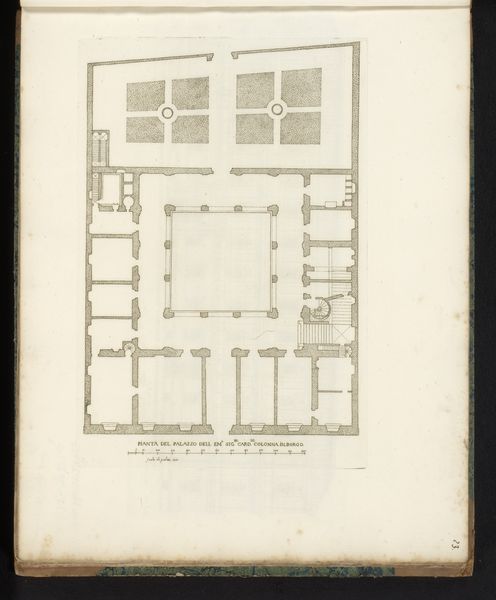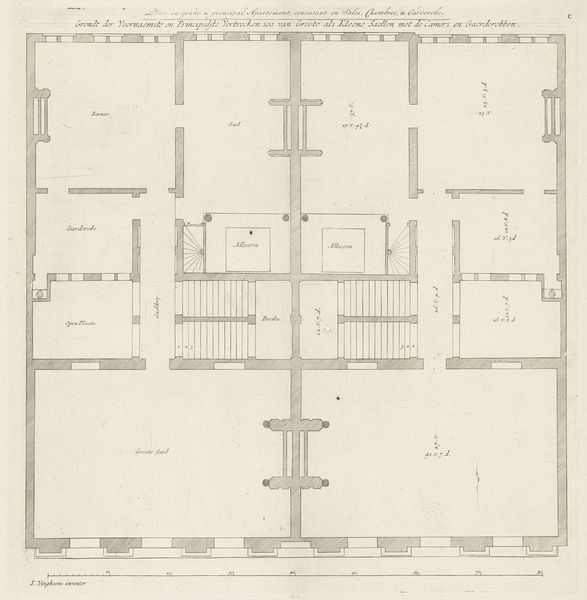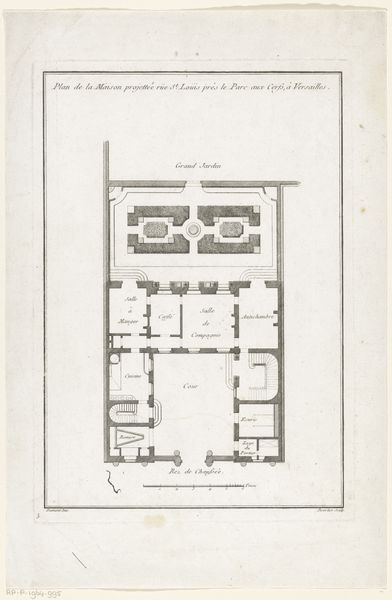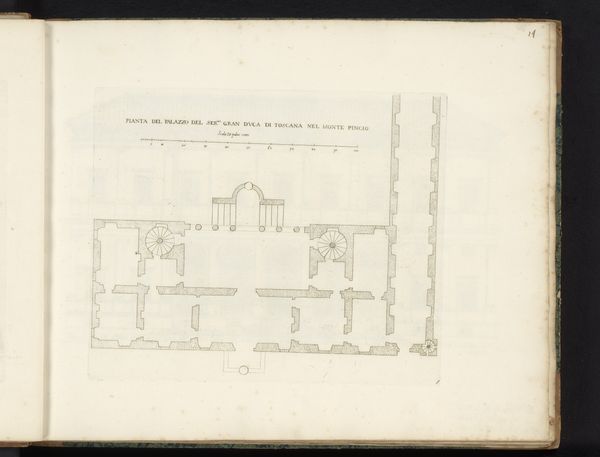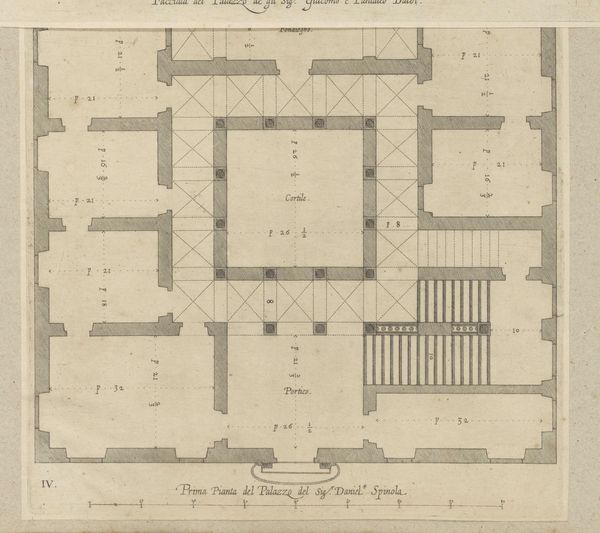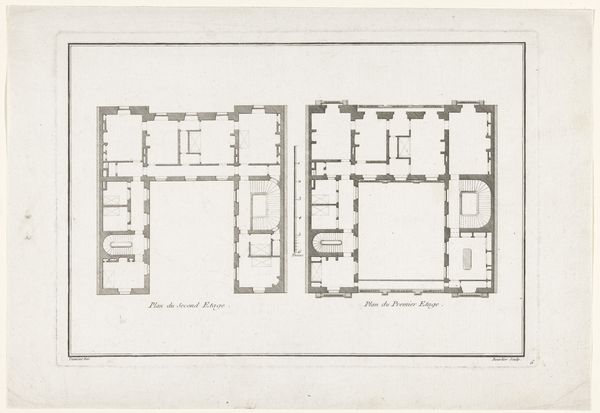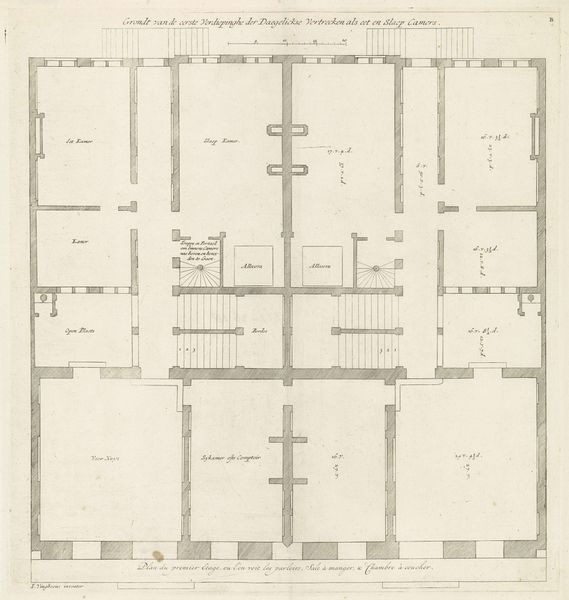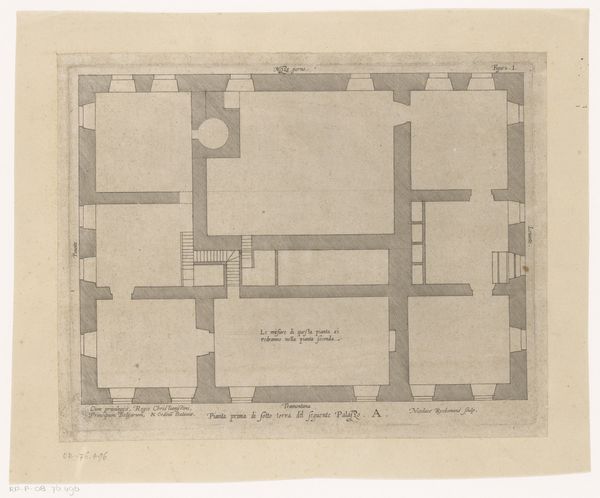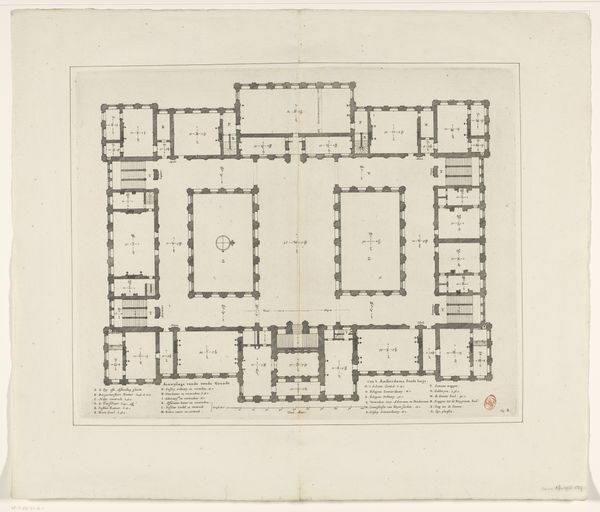
Dwarsdoorsnede en plattegrond van Schloss Weißenstein 1727 - 1754
0:00
0:00
johannmatthiassteudlin
Rijksmuseum
drawing, print, paper, ink, engraving, architecture
#
drawing
#
baroque
# print
#
landscape
#
paper
#
ink
#
geometric
#
cityscape
#
engraving
#
architecture
Dimensions: height 327 mm, width 570 mm
Copyright: Rijks Museum: Open Domain
This print of Schloss Weißenstein, made by Johann Matthias Steudlin, offers a bird’s eye view of the palace and gardens. It’s an engraving, meaning the design was incised into a metal plate, inked, and then pressed onto paper. The choice of this reproductive medium is significant. Unlike a painting, which would be unique, an engraving allowed for the widespread dissemination of this image. Consider the amount of work involved. An engraver would have to be skilled in technical drawing, and also possess the manual dexterity required to cut the fine lines. The materials, tools, and methods come from a world of commerce and communication. Look closely, and you’ll notice the emphasis on order and control, reflecting both the landscape and the labor needed to maintain it. Prints like this one circulated widely, solidifying the image of elite status that the owners wanted to project. The print itself becomes a commodity, participating in the same system of value and exchange as the palace it depicts.
Comments
No comments
Be the first to comment and join the conversation on the ultimate creative platform.
